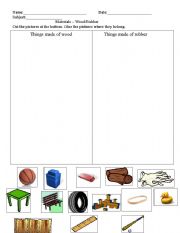
|
materials: wood/rubber t-chart
I used a pencil to describe the difference between wood and rubber materials. Then the students had to determine whether the object is made of wood or rubber materials on the t-chart. The pictures are all objects the students are familiar with, therefore, background knowledge was not difficult.
Level: elementary
Age: 4-10
Type: worksheet
Downloads: 8
|
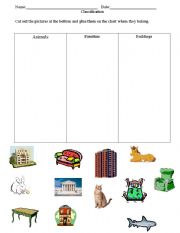
|
classification: animals, buildings, furniture
Students learn vocabulary words through a cut and paste worksheet. After using flashcards, they sort types of animals, buildings, and furniture into the category it belongs.
Level: elementary
Age: 3-14
Type: worksheet
Downloads: 3
|
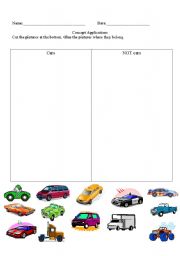
|
Cars or Not Cars
Students diiferentiate the difference between cars and other vehicle like trucks or vans.
Level: elementary
Age: 4-8
Type: worksheet
Downloads: 4
|
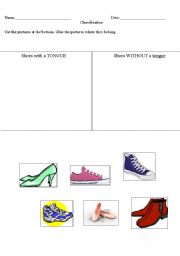
|
shoes with tongue
This is used to teach parts of a shoe for vocabulary. Students had the most difficulty remembering the word "tongue" for a shoe. This helps them classify shoes by that vocabulary word.
Level: elementary
Age: 4-8
Type: worksheet
Downloads: 0
|
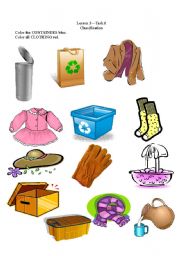
|
container and clothes
students differentiate the word container from the word clothing.
Level: elementary
Age: 4-8
Type: worksheet
Downloads: 7
|
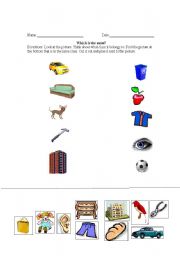
|
Which is the same?
Students identify type of class (i.e. food, container, building, tool etc.). They must cut out the matching picture at the bottom and glue next to the picture in the same category.
Level: elementary
Age: 4-9
Type: worksheet
Downloads: 0
|
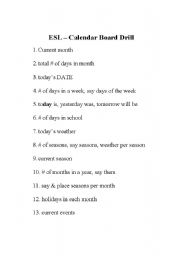
|
ESL board Drill
This is a daily drill we do with a Calendar/ESL board. he drill is done daily before the ESL lesson for the day.
Level: elementary
Age: 4-9
Type: activity-card
Downloads: 1
|